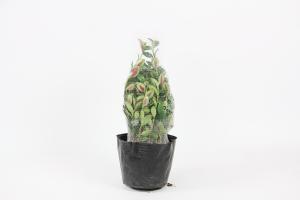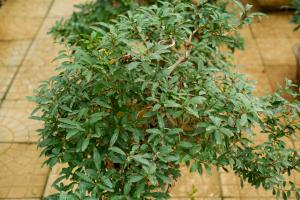Can You Use Acrylic Paint on Plant Pots?
Plant pots are not only functional but also decorative items in your home or garden. Instead of buying expensive new pots, why not update your old ones with a coat of paint? If you’re considering using acrylic paint, you might be wondering if it’s safe and effective for plant pots. Let’s explore this topic in more detail.
What is Acrylic Paint?
Acrylic paint is a water-based paint that contains acrylic polymers. It dries quickly, is water-resistant, and can be used on a variety of surfaces, including canvas, wood, paper, and glass. Acrylic paint is available in a wide range of colors and finishes, from matte to glossy.
Is Acrylic Paint Safe for Plant Pots?
Yes, acrylic paint is safe for plant pots. It’s non-toxic, so it won’t harm your plants or contaminate your soil. However, it’s important to note that the paint may deteriorate over time due to weather exposure, water, and soil moisture. If you’re painting the inside of the pot, make sure the paint is fully dry before adding soil and plants.
Prepping Your Pot for Painting
Before you start painting your pot with acrylic paint, you need to prep the surface properly. Remove any dirt, grime, or old paint from the pot. If the pot is ceramic or terracotta, you may need to sand it lightly to create a rough surface for the paint to adhere to. Clean the pot with soap and water, and let it dry completely before painting.
Painting Your Pot
Once your pot is clean and dry, it’s time to paint it. Use a paintbrush or sponge to apply the acrylic paint evenly. Start with a thin layer and let it dry completely before applying a second coat. Avoid painting the inside of the pot if possible, as the paint may peel off over time due to soil moisture. If you do decide to paint the inside, apply a sealant after the paint is dry to protect it from water damage.
Tips for Using Acrylic Paint on Plant Pots
Here are some tips to help you get the best results when using acrylic paint on plant pots:
Choose a high-quality acrylic paint for better coverage and durability.
Use a primer before painting to help the paint adhere better to the surface.
Avoid painting on very hot or humid days, as the paint may dry too quickly or become runny.
Apply a clear coat after the paint is dry to protect it from the elements and ensure its longevity.
Consider using stencils or masking tape to create patterns or designs on your pot.
Conclusion
Acrylic paint is a safe and effective option for sprucing up your plant pots. With proper prepping and painting techniques, you can transform your pots into unique and stylish pieces that complement your plants and home decor. Experiment with different colors and finishes, and have fun with the process!

 how many times do yo...
how many times do yo... how many planted tre...
how many planted tre... how many pine trees ...
how many pine trees ... how many pecan trees...
how many pecan trees... how many plants comp...
how many plants comp... how many plants can ...
how many plants can ... how many plants and ...
how many plants and ... how many pepper plan...
how many pepper plan...






























